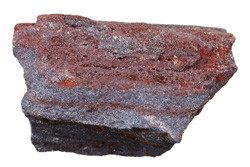From nature to laboratory and back
Magnetic mineralogy is the study of the magnetic properties of minerals. Iron–titanium (FeTi) oxides are such materials and constitute one of the main magnetic carriers in the Earth's crust. The two end-members, haematite and ilmenite, are of technological and industrial interest. Both magnetic and semiconducting, these FeTi oxides have applications in photovoltaics, fuel cells and other areas of ongoing scientific research. The work of 'From the planetary to the nanoscale: Magnetism at the interface' (PNMI) project researchers aimed to understand the generation and evolution of magnetic fields on Earth and other planets. They also addressed questions surrounding how magnetic information in the Earth's crust is preserved. Another area of exploration was where magnetism arises in natural materials and how to gain insights into natural systems through their magnetic properties. Using a broad range of experimental tools, including scanning electron microscopy, X-rays and electron diffraction experiments, PNMI researchers made new discoveries about old rocks. They analysed magnetic properties of geological samples and then compared the data with that yielded from synthetic materials. This provided structural information about the natural materials, while synthetic samples permitted the analysis of magnetic effects in FeTi oxides. The structure of the samples provide a unique record of geological processes, helping PNMI researchers to understand the complex systems beneath our feet. They also exhibited interesting magnetic properties, with useful applications. In the case of haematite–ilmenite solutions, the samples acquired remanent magnetisation that opposed the direction of the magnetic field it was subjected to — a phenomenon termed self-reversed thermoremanent magnetisation. The results of these investigations were summarised in a series of papers published in peer-reviewed journals. The PNMI project resulted in a consistent interpretation of the physical and chemical processes responsible for self-reversal in the haematite–ilmenite solid solutions. At the same time, the understanding of their intrinsic properties should help scientists identify the presence of haematite and ilmenite in rock samples both on Earth and other planets.







